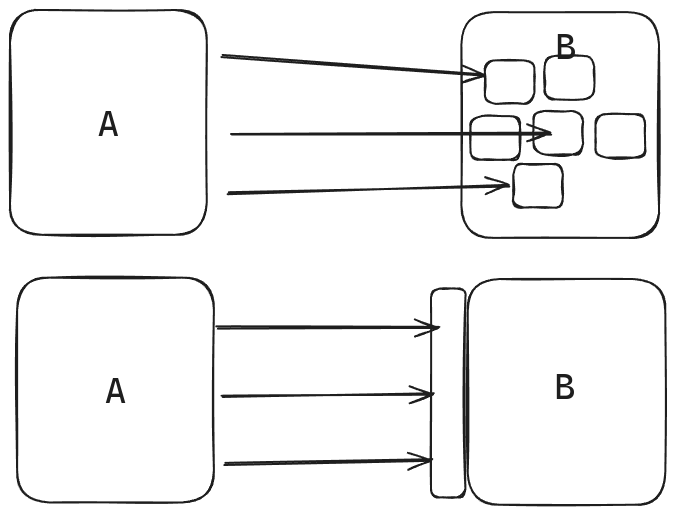
What is Coupling? Link to heading
Imagine you have two software components, A and B. In the worst-case scenario of tight coupling, changing one component unexpectedly affects the other, even if they don’t directly collaborate. This interdependence creates a tangled mess, making modifications difficult and prone to errors.
However, software often thrives on collaboration. This is where loose coupling comes into play. Loose coupling promotes independence between components. They can function with minimal reliance on each other’s internal workings. As a result, changes in one component have minimal impact on the other, leading to a more maintainable and adaptable system.
Achieving Loose Coupling with Stable Interfaces Link to heading
The key to achieving loose coupling lies in utilizing stable interfaces. Let’s say component A requires services from component B. We can achieve loose coupling by hiding B’s internal implementation details behind a well-defined interface. This interface acts like a contract, specifying how components interact and what functionalities B provides. A interacts with B through this interface, not B’s internal code.
Here’s the crucial point: Coupling itself isn’t inherently bad. The problem arises when we’re coupled to unstable, frequently changing internal details. By using stable interfaces, we manage coupling and ensure changes are localized.
Example Interfaces Link to heading
Function Signature:
A function signature defines the interface between a function and the code that calls it. It specifies the function’s name, parameters (inputs), and return type (output). This signature acts as a contract, telling the calling code what to expect and what data to provide.
Class Public API:
A class’s public API (Application Programming Interface) refers to the collection of methods and properties that are accessible to other parts of the code. It defines how users can interact with the class and its functionalities. Just like a function signature, the public API establishes a contract between the class and its users.
Service REST API:
A service REST API (Representational State Transfer) defines the interface between a service and its clients. It specifies how clients can access and manipulate the service’s resources using HTTP requests and responses. This API acts as a contract, allowing clients to interact with the service in a standard way, regardless of the underlying implementation details.
Event Format:
An event format defines the interface between components that communicate through events. It specifies the structure of the data carried by the event, including the event type and any relevant data fields. This format ensures that components understand the information being exchanged, enabling them to react appropriately.
Tight vs. Loose Coupling: Examples Link to heading
Tight Coupling: Imagine component A directly calls specific functions within B’s internal code. If B’s internal workings change, A might break due to the tight interdependence.
Loose Coupling: In contrast, A calls functions defined in B’s stable interface. B can freely change its internal implementation as long as the interface remains consistent. A remains unaffected by these internal changes.
The Fractal Nature of Coupling Link to heading
The principle of coupling applies across all levels of software design:
- Functions
- Classes
- Packages
- Modules
- Microservices
This concept aligns with the idea of software as a fractal, where similar patterns repeat themselves at different scales. By striving for loose coupling at each level, we build software that is robust, adaptable, and easier to maintain in the long run.